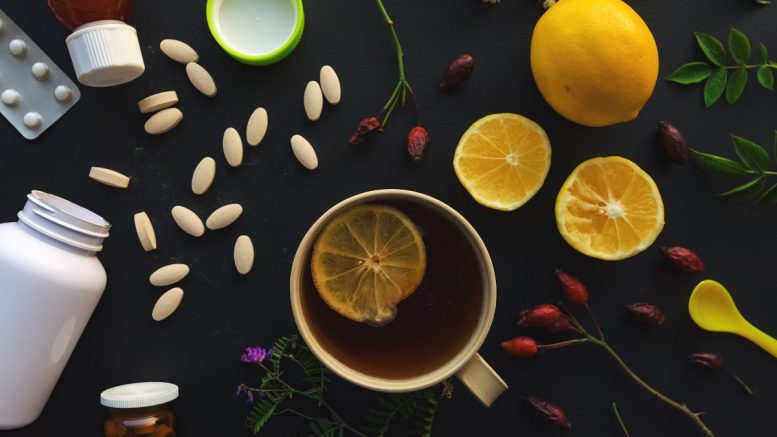Rituals play a significant role in human lives, offering a sense of structure, routine, and meaning to our daily actions. While rituals are commonly associated with cultural and personal practices, their potential impact extends to various aspects of life, including healthcare. In the realm of medication consumption, rituals are noticeably absent, leading to challenges like poor patient compliance and a clinical approach. However, with the blurring of boundaries between consumer wellness and traditional medicine, there is an opportunity for forward-thinking brands to introduce new delivery mechanisms for well-being drugs, incorporating rituals that foster behavioural change. Let’s explore the concept of social and habitual delivery mechanisms for well-being drugs and the potential power of rituals to facilitate take-up and drive positive change in medication consumption behaviours.
Creating Rituals for Well-Being Drugs
Pharmaceutical medicine has historically been lacking the rituals that often accompany wellness practices. This absence not only affects patients’ ability to remember and adhere to medication schedules but also contributes to the clinical perception of drugs. By integrating rituals into the consumption process, brands can create behaviour changes that prioritise sustainability and positive habits. The challenge lies in determining what this new delivery mechanism could look like and how it can bridge the gap between social constructs associated with well-being practices and pharmaceutical medication.
Incorporating Social Constructs
Well-being practices are often associated with positive experiences, shared knowledge, aesthetics, pleasure, sensorial experience and openness, whereas traditional medication is commonly linked to illness, loneliness and stigma. If it is common to see people take supplements from colourful bottles in public, it is rare to see people get their medication out of their bags and take it in front of others. Shame and stigma prevent them from doing so. But what if we could implement the very rituals used in well-being practices, such as bringing in the idea of togetherness, sensorial experience and pleasure into medical consumption? Should taking medicine be devoid of all pleasure or can pleasure be used sensibly to reinforce compliance and remove stigma? Medicine is the last
Leveraging social media platforms and influencers who openly discuss their experiences with medication and illness to break down barriers and normalise the conversation surrounding drugs can also be transformative. However, establishing trust and accurate information is crucial and collaborating with mental and healthcare experts will help to provide reliable sources of information, ensuring accurate knowledge dissemination.
Products and rituals that can help
- Patches
Patches offer a discreet and stigma-free method of drug delivery, seamlessly integrating into one’s daily life. They eliminate the need for physical pill packets and provide a more sustainable alternative. Smoking and nicotine patches are already popular on the market helping people stop smoking by administering a steady level of nicotine into the body and lessening withdrawal. But patches could be more widely used to administer a variety of medications too.
- Smoothies
Incorporating medications into smoothies or other tasty beverages can create a positive association with consumption, making individuals feel good about taking care of their well-being and health. Medication could be delivered to patients in a powdered form, allowing easy incorporation into the smoothie or drink and making the daily experience of taking medication much more pleasurable.
- Digital Reminders/Trackers
Utilising digital platforms for tracking health and vitality can help individuals monitor their well-being and receive timely reminders for medication intake. These trackers also enable healthcare providers and patients to assess medication effectiveness. Trackers like the Apple Watch can use rewards and gamification to motivate individuals to complete their course of treatment. Additionally, collaborating with external brands to offer incentives, such as vouchers or discounts, can further enhance adherence.
- Convenience and Portability
More generally, medications need to be redesigned to fit seamlessly into people’s lifestyles, which will increase accessibility and encourage consistent consumption. Portable pill packs, organized by day, for instance, can be easily carried in pockets or bags. If pill administration has been highly regulated for safety purposes, particularly with child-proof technology in mind, pill packs can be redesigned to still fit the safety requirements and better fit into people’s daily lives. An example would be creating containers formed by compressing medical-grade steel, made compatible with auto-dose appliances that can store and dispense the right medication at the right time while including safety measures that do not require mere strength and dexterity but rather the need for adult-sized hands. By using structural design, transportation can be simplified, creating containers that can easily be linked together, making them space efficient. These containers could further be designed to only be disassembled using a specialised tool for cleaning, adding an extra layer of protection against tampering.
Promoting Sustainability
Rituals in medicine can also contribute to sustainability efforts. Current pill packs are often made of plastic, leading to environmental damage. Brands can transition to durable and sustainable packaging materials, ensuring that medication consumption aligns with individuals’ values of environmental responsibility. By making sustainability a part of the ritual, taking medication can become an act of service to both personal well-being and the planet.
Driving Behavioral Change in Patients
Challenges like the non-adherence to medication courses can be addressed through the establishment of new habits driven by desire rather than necessity. By making medication consumption more pleasurable, convenient, and contextually normal, brands can transform it into a positive experience that individuals actively want to engage in. This shift from perceiving medication as a burden to something enjoyable and constructive can help drive behavioural change and promote better adherence.
Challenges for Brands
Brands may encounter several obstacles in their pursuit of creating ritualistic formulas for pharmaceutical drugs, particularly when it comes to regulations in the medical space. However, breaking established thought patterns within the healthcare industry and regulatory frameworks is essential to foster innovation and explore new solutions. Balancing the seriousness and safety of medications to turn them into desirable products will require careful consideration.
Introducing rituals into the consumption of well-being drugs holds significant potential to drive behavioural change and improve adherence. By incorporating elements of social interaction, convenience, sustainability, and pleasure, brands can transform medication consumption from a clinical process into a meaningful and sustainable ritual. With the right combination of innovative delivery mechanisms, collaboration with trusted experts, and a focus on patient-centred experiences, pharmaceutical brands can empower individuals to embrace their well-being while effectively managing their medication routines.
By Nick Dormon, Managing Director at brand design and innovation agency, Echo





